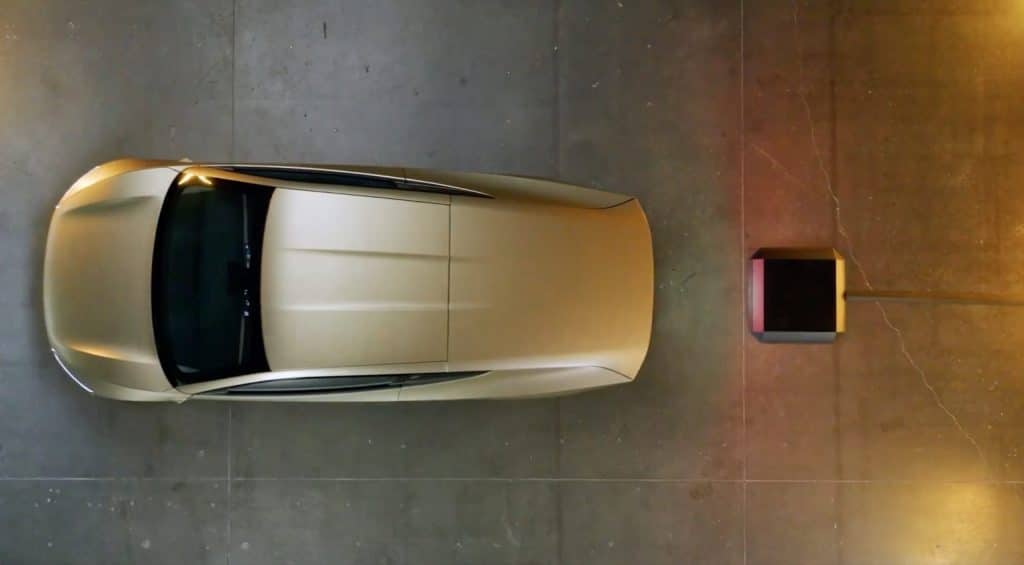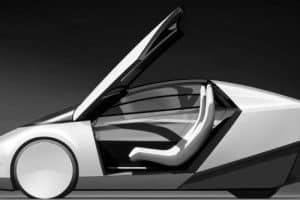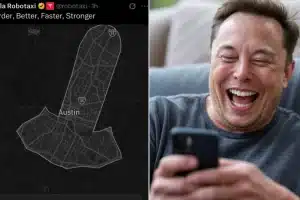Key Takeaways
- Tesla’s Cybercab aims for a battery pack under 50kWh, with nearly 300 miles of real-world range, making it more efficient than current EVs.
- The Cybercab’s efficiency is partly due to its highly-aerodynamic design, including aero wheel covers and a teardrop shape.
- The vehicle’s two-seat design allows for unique aerodynamic features, contributing to its efficiency and aesthetic appeal.
- Production equipment for the Cybercab is being installed at Tesla’s Gigafactory Texas, with prototype builds expected by this summer.
- The design of the Cybercab and Robovan draws inspiration from art deco and was showcased at an event in October.
- Tesla plans for the Cybercab include making it “road-trip-capable” with wireless charging, supporting a fully autonomous driving experience.
Tesla continues to push the boundaries of electric vehicle innovation with its latest reveal, the Cybercab. This new entrant into the world of EVs promises a blend of groundbreaking efficiency, futuristic design, and part of a sustainable future that Tesla envisions. In this blog post, we delve into the key details and implications of the Cybercab as shared by Tesla’s top executives, Lars Moravy and Franz von Holzhausen, in a recent interview.
Unveiling the Cybercab’s Efficiency
At the heart of the Cybercab’s promise lies its impressive battery technology. Tesla aims for a battery pack under 50kWh that could provide close to 300 miles of real-world driving range. This not only sets a benchmark in terms of efficiency but also pushes the envelope for what can be expected from future electric vehicles.
The Impact of Design on Efficiency
The Cybercab owes much of its efficiency to its highly-aerodynamic design. Key features include:
- Aero Wheel Covers: These contribute significantly to reducing drag and enhancing the vehicle’s range.
- Teardrop Shape: A design that’s narrow at the rear and wider in the front, optimizing airflow.
- Two-Seat Configuration: Allows for innovative design choices that accentuate both efficiency and aesthetic value.
Production Plans and Future Potential
Tesla is already taking bold steps towards production. The installation of production equipment has begun at Gigafactory Texas, with prototype builds expected soon. Once operational, this facility will not only be a hub for Cybercab production but also a testament to Tesla’s commitment to scaling sustainable transportation solutions.

A Design Inspired by the Future
The visual appeal of the Cybercab and its sibling, the Robovan, draws from art deco influences, seamlessly blending classic inspirations with futuristic undertones. This design was showcased at a distinct event, highlighting how Tesla continues to lead in styling as well as substance.
A Look at Autonomous Travel
Beyond aesthetics and efficiency, the Cybercab is a leap towards fully autonomous travel. With plans to be “road-trip-capable,” Tesla envisions a future where the Cybercab can handle long distances with ease, featuring:
- Wireless Charging: Making long-distance travel smoother and more convenient.
- Fully Autonomous Features: Aiming for self-reliant journeys where passengers can relax as the vehicle handles the drive.
Implications for the Future of Urban Mobility
Tesla’s Cybercab is not just a vehicle; it is a vision for the future of urban mobility. It symbolizes a shift towards:
- Sustainable Transport Solutions: Reducing carbon emissions and dependence on fossil fuels.
- Innovative Automotive Engineering: Paving the way for future innovations in the EV sector.
- Elevated Travel Experiences: Where efficiency, style, and autonomy cohere into a seamless journey.
As the world embraces electric vehicles, Tesla’s Cybercab stands out as a transformative achievement, merging efficiency and bold design with autonomous technology. With production ramping up and ambitious plans already in motion, the Cybercab is set to redefine urban transportation, offering a glimpse into a cleaner, smarter future.





